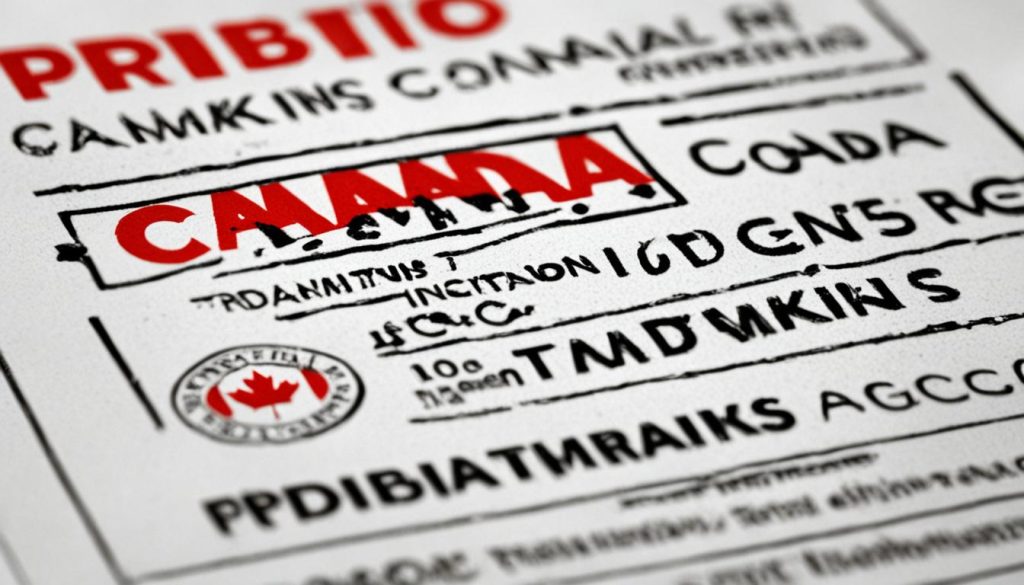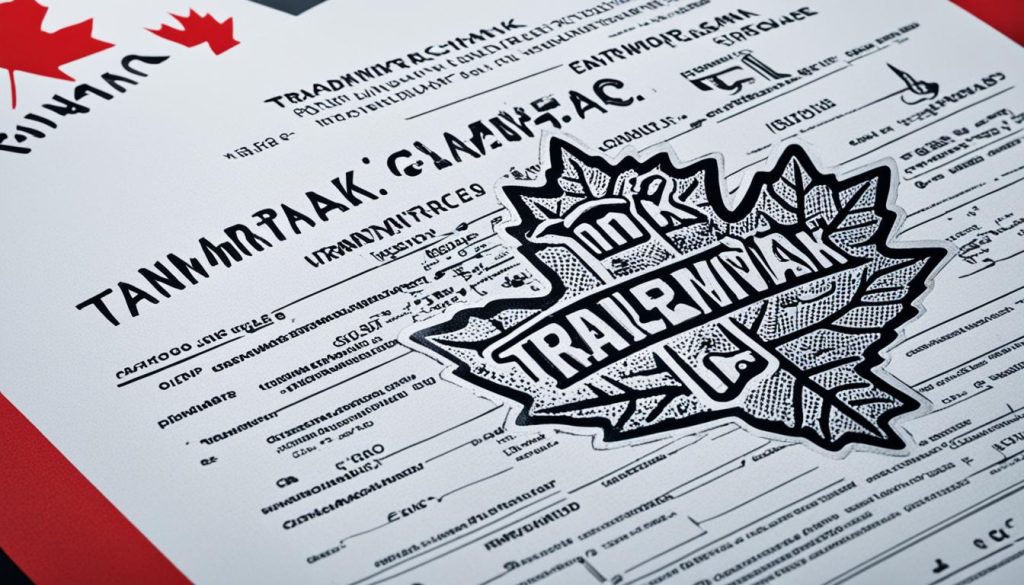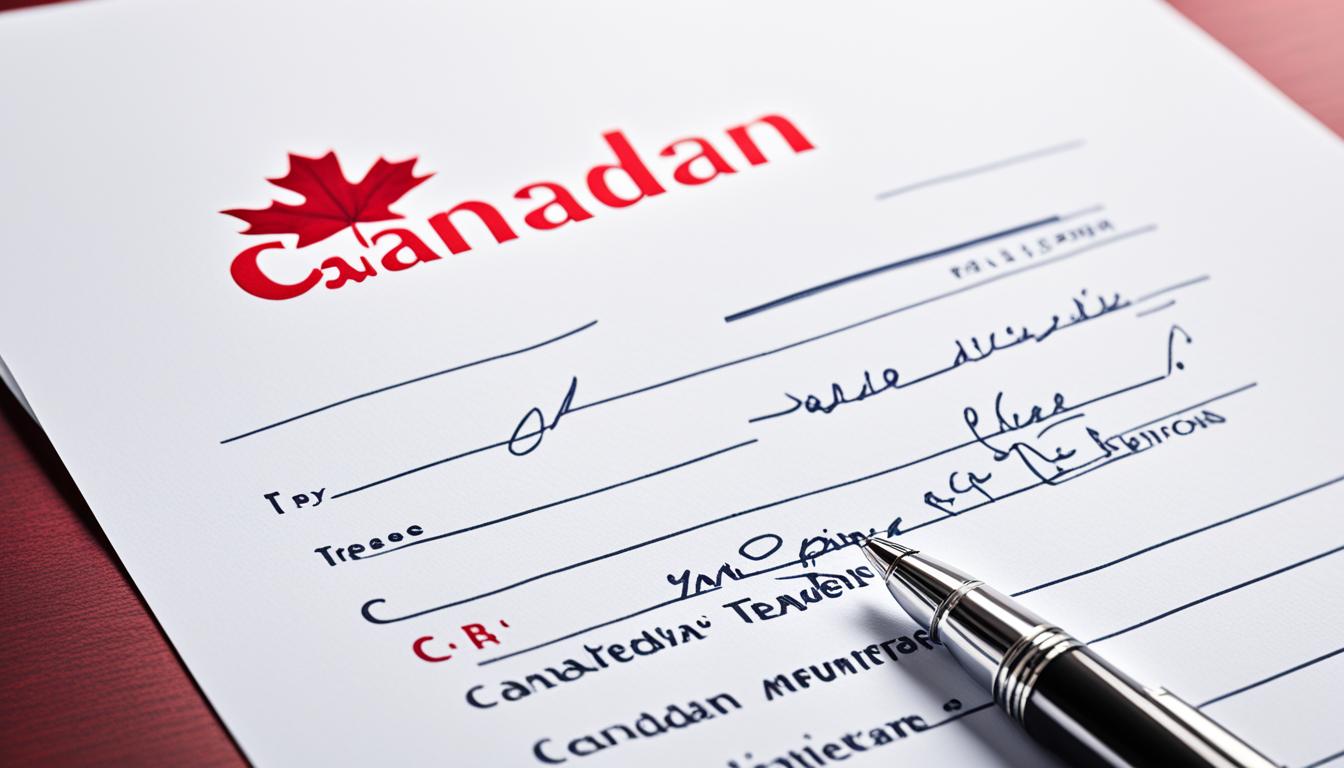Did you know that in Canada, over 30,000 trademark applications are filed each year? Securing a trademark for your business name or brand is a crucial step in protecting your intellectual property and building a strong, recognizable identity. This comprehensive guide will provide you with a detailed roadmap on how to trademark a name in Canada, ensuring you navigate the process with confidence and success.
Trademarking a name in Canada involves understanding the intricacies of the Canadian Trademarks Act, exploring the different types of trademarks, and carefully navigating the application and registration process. From determining eligibility and conducting trademark searches to filing the application, handling potential opposition, and maintaining your registered trademark, this guide covers all the essential aspects you need to know.
Whether you’re a new entrepreneur, a seasoned business owner, or simply looking to protect your personal brand, this article will equip you with the knowledge and tools to trademark your name in Canada. Let’s dive in and explore the world of Canadian trademark registration, ensuring your brand stands out and is safeguarded for the long term.
Understanding Trademarks in Canada
Trademarks play a crucial role in the Canadian business landscape, serving as powerful tools for companies to distinguish their goods and services from those of their competitors. In this section, we’ll delve into the fundamentals of trademarks, exploring their various types, the differences between trademarks and other forms of intellectual property, and the distinction between trade names and trademarks.
What is a Trademark?
A trademark is a sign or combination of signs used to distinguish the goods or services of one person or organization from those of others. This can include words, designs, sounds, scents, or any other visual or auditory representation that helps consumers identify the source of a product or service.
Types of Trademarks
The Canadian Trademarks Act recognizes several types of trademarks, including ordinary trademarks (such as words, logos, and slogans), certification marks (which indicate that a good or service meets a certain standard), and distinguishing guises (which encompass the shape of a product or its packaging).
Trademarks vs. Other Intellectual Property
Trademarks are a distinct form of intellectual property, separate from patents, copyrights, industrial designs, and integrated circuit topographies. While these other forms of IP protect inventions, creative works, and designs, trademarks focus on identifying the source of goods and services in the marketplace.
Trade Name vs. Trademark
It’s important to understand the difference between a trade name and a trademark. A trade name is the name under which a business operates, while a trademark is specifically used to identify the goods or services associated with that business. Registering a trademark provides exclusive rights to use it across Canada for 10 years, renewable thereafter.
Registered Trademark vs. Unregistered Trademark
In Canada, trademarks can be either registered or unregistered. Registered trademarks offer stronger and more comprehensive legal protection, granting the owner exclusive rights to use the mark throughout the country. Unregistered trademarks also have some legal protection, but the rights are more limited in scope and can be more challenging to enforce.

What You Can and Cannot Register as a Trademark
The Canadian Trademarks Act outlines the specific criteria for what can and cannot be registered as a trademark in Canada. Understanding these guidelines is crucial for businesses looking to protect their brand identity and distinguish their goods or services from others.
1. Marks That Can Be Registered
The Act allows for the registration of a wide range of marks that can be registered as trademarks in Canada, including words, designs, sounds, scents, and other signs used to identify and distinguish a company’s offerings. These distinctive elements can serve as valuable assets in building brand recognition and preventing consumer confusion in the marketplace.
2. Marks That Cannot Be Registered
Conversely, the Act also identifies certain marks that cannot be registered as trademarks in Canada. These include names and surnames, marks that are clearly descriptive or deceptively misdescriptive of the associated goods or services, geographical indications, and marks that are confusingly similar to existing registered or pending trademarks.
3. Prohibited Trademark Registrations
The Canadian Trademarks Act also prohibits the registration of trademarks that consist of or resemble plant variety denominations or geographical indications for wines, spirits, and certain agricultural products. This ensures that these protected designations remain available for their intended use and do not become subject to exclusive ownership through trademark registration.

Eligibility and Duration of Trademark Registration
When it comes to trademarking a name in Canada, it’s important to understand the eligibility requirements and the duration of the registration process. The Canadian Trademarks Act specifies that the applicant must be a “person”, which can include individuals, partnerships, trade unions, associations, joint ventures, or corporations. This broad eligibility criteria ensures that a wide range of entities can apply for a trademark in Canada.
1. Who Can Apply for Registration?
The application for trademark registration in Canada can be filed by any “person” as defined by the Act. This includes not just individuals, but also various types of organizations and legal entities. As long as the applicant can demonstrate a legitimate interest in the trademark, they can proceed with the registration process.
2. How Long Does Registration Last?
Once a trademark is successfully registered in Canada, the initial term of the registration is 10 years from the date of registration. After this initial period, the trademark can be renewed for successive 10-year terms, as long as the trademark continues to be used in Canada. This renewable 10-year cycle ensures that registered trademarks can maintain their legal protection for as long as the owner continues to actively use and enforce the mark.

Costs and Fees for Trademark Registration
Applying for a trademark registration in Canada requires paying an application fee. The current application fee is $330 CAD. If the trademark is successfully registered, it must be renewed every 10 years, for which a renewal fee of $400 CAD is payable.
1. Application Fee
The application fee to register a trademark in Canada is $330 CAD. This covers the administrative costs associated with processing and examining the trademark application by the Canadian Intellectual Property Office.
2.n Renewal Fee
Once a trademark is registered, it must be renewed every 10 years to maintain the registration. The trademark renewal fee in Canada is $400 CAD. Timely renewal is essential to ensure the continued protection and exclusive rights to the registered trademark.

Preparatory Steps Before Filing
Before submitting a trademark application in Canada, it’s crucial to conduct thorough research to ensure the proposed mark is available for use and registration. This involves two key preparatory steps:
1. Search the Canadian Trademarks Database
The first step is to search the Canadian Trademarks Database, maintained by the Canadian Intellectual Property Office (CIPO). This comprehensive database allows you to check for any existing or pending trademarks that may be confusingly similar to your proposed mark. By conducting a thorough search, you can avoid wasting time and resources on an application that may be rejected due to a conflicting trademark.
2. Search Trade Names
In addition to searching the trademarks database, it’s also essential to search for registered trade names in Canada. A trade name is the legal name of a business, which may differ from the trademark or brand name used to identify its goods or services. Ensuring your proposed mark doesn’t conflict with an existing trade name can help prevent potential legal issues down the line.
3. Consider Hiring a Registered Trademark Agent
While it’s possible to file a trademark application in Canada without professional assistance, hiring a registered trademark agent is often the best course of action. These experts have the necessary knowledge and experience to properly prepare and file the application, as well as handle any subsequent correspondence with the Canadian Intellectual Property Office. Their involvement can help ensure the application process goes smoothly and maximize the chances of successful registration.
How to Trademark a Name in Canada?
The process of trademarking a name in Canada involves several key steps. First, the trademark application must be properly prepared, including providing the applicant’s information, a representation or description of the mark, and a statement of the goods and/or services associated with the mark.
Preparing a Trademark Application
The completed application is then filed with the Canadian Intellectual Property Office, either electronically or by mail. The application undergoes an examination process, during which the Registrar will review it for compliance with the Trademarks Act.
1. Filing the Trademark Application
If the application is accepted, the mark will be published in the Trademarks Journal, allowing third parties to oppose the registration if they believe it would cause confusion with their own trademarks.
2. Application Review and Publication
During the examination process, the Registrar will assess the application to ensure it meets the requirements of the trademark application process in Canada. If the mark is found to be registrable, it will be published in the Trademarks Journal, initiating a 2-month period where others can file an opposition.
3. Potential Opposition Proceedings
If a third party believes the proposed trademark would be confusingly similar to their own registered or pending trademark in Canada, they can file an opposition. This initiates a formal legal proceeding where both parties present their arguments to the Registrar, who will then determine whether the trademark should be registered or refused.
Registering Trademarks Outside Canada
While the focus of this guide has been on registering trademarks in Canada, businesses must also consider registering trademarks outside Canada if they operate or plan to expand into other jurisdictions. The process and requirements for registering trademarks outside Canada can vary significantly, so it’s essential to consult with trademark experts or agents in the relevant countries to ensure appropriate protection for your brand.
Expanding your trademark protection beyond Canada’s borders is a crucial step in safeguarding your brand’s intellectual property and maintaining a consistent global presence. By registering trademarks outside Canada, you can prevent unauthorized use of your mark in other markets, assert your exclusive rights, and build a stronger, more recognizable brand identity worldwide.
The specific requirements and procedures for registering trademarks outside Canada will depend on the laws and regulations of the target countries or regions. Factors such as filing deadlines, application fees, documentation requirements, and opposition proceedings can vary significantly. Seeking the guidance of local trademark professionals can help you navigate these complexities and ensure your trademark is properly registered and protected in each relevant jurisdiction.
Investing the time and resources to register your trademark outside Canada can provide invaluable long-term benefits for your business. By safeguarding your brand’s intellectual property across multiple markets, you can better position your company for successful international expansion, prevent potential legal disputes, and maintain a strong, consistent global presence for your products or services.
Maintaining and Protecting Your Trademark
Maintaining and protecting a registered trademark in Canada involves several ongoing responsibilities. The trademark renewal in canada is a crucial aspect, as the registration must be renewed every 10 years for it to remain valid. The trademark owner must also ensure the mark is being used in canada in association with the registered goods and/or services, as non-use can lead to the registration being expunged.
To protect a trademark in canada, the trademark owner should also actively monitor the marketplace and take appropriate action to prevent unauthorized use of the mark or confusingly similar marks by others. This vigilance helps safeguard the brand’s identity and exclusivity in the Canadian market.
Common Pitfalls and Mistakes
When trademarking a name in Canada, businesses should be aware of some common pitfalls and mistakes to avoid. These include failing to conduct a comprehensive trademark search before filing an application, not properly preparing the application, not renewing the registration on time, neglecting to police the use of the trademark, and attempting to register a mark that is clearly descriptive or confusingly similar to an existing trademark. Seeking the guidance of a registered trademark agent can help businesses navigate the process and sidestep these potential pitfalls.
One of the most common trademark mistakes in Canada is not conducting a thorough search of the Canadian Trademarks Database before filing an application. Businesses may inadvertently choose a mark that is already registered or too similar to an existing one, leading to potential opposition or even rejection of the application. Proper due diligence in the pre-application stage is crucial to avoid this pitfall.
Another common mistake is not properly preparing the trademark application. This includes accurately identifying the goods and services, correctly representing the mark, and ensuring all required information and supporting documents are included. Incomplete or inaccurate applications can delay the registration process or even result in the application being refused.
Failing to renew the trademark registration on time is another pitfall that businesses should be aware of. Trademarks in Canada must be renewed every 10 years to maintain their legal protection. Letting the registration lapse can leave the business vulnerable to others using the mark and can be a costly mistake to rectify.
Neglecting to police the use of the trademark is also a common pitfall. Trademark owners have a responsibility to actively monitor the market for any unauthorized use of their mark or confusingly similar marks. Failure to take action can lead to the gradual dilution or loss of the trademark’s distinctiveness and legal protection.
Finally, businesses should be cautious about attempting to register a mark that is clearly descriptive or too similar to an existing trademark. The Canadian Trademarks Act prohibits the registration of marks that are deemed confusing with other registered or pending trademarks. Trying to register such a mark can result in opposition proceedings and the application being rejected.
By being mindful of these common trademark mistakes in Canada and seeking the guidance of a registered trademark agent, businesses can navigate the trademarking process more effectively and protect their brand’s valuable intellectual property.
Conclusion
Trademarking a name in Canada is an essential step for businesses seeking to protect their brand and establish a strong, recognizable identity. This comprehensive guide has provided a detailed overview of the key considerations, requirements, and steps involved in the trademark registration process in Canada. By understanding the eligibility criteria, application process, maintenance responsibilities, and potential challenges, businesses can effectively navigate the trademarking landscape and ensure their name is properly protected.
Whether you’re a new or established enterprise, securing a trademark in Canada is a valuable investment in the long-term success and growth of your brand. By following the guidelines outlined in this guide, businesses can successfully trademark their name and capitalize on the exclusive rights and legal protections that come with a registered trademark. With the right preparation and attention to detail, the process of how to trademark a name in canada can be a seamless and rewarding experience, laying the foundation for a strong and distinctive brand identity.
Ultimately, trademark registration in canada is a crucial step for businesses of all sizes, empowering them to safeguard their intellectual property, deter unauthorized use, and build a lasting, differentiated brand in the Canadian marketplace. By taking the time to understand and navigate the trademarking process, businesses can secure a valuable asset that will serve them well in their pursuit of long-term success and growth.
FAQ
1. How much does it cost to trademark a name in Canada?
The current application fee to trademark a name in Canada is $330 CAD. If the trademark is successfully registered, it must be renewed every 10 years, for which a renewal fee of $400 CAD is payable.
2. Do I need a lawyer to register a trademark in Canada?
While you don’t necessarily need a lawyer to register a trademark in Canada, it is advisable to hire a registered trademark agent. They have the necessary expertise to properly prepare and file the application, as well as handle any subsequent correspondence with the Canadian Intellectual Property Office.
3. How long does it take to trademark a name in Canada?
The timeline for trademarking a name in Canada can vary, but generally it takes around 12-18 months for the application to be processed and the trademark to be registered, assuming there are no complications or oppositions.
4. How do I copyright my name and logo in Canada?
To protect your name and logo in Canada, you should register them as a trademark rather than a copyright. Trademarks protect the use of words, symbols, or designs that identify and distinguish your goods or services, while copyrights protect original creative works.
5. How to protect a brand name in Canada?
The best way to protect a brand name in Canada is to register it as a trademark. This will give you exclusive rights to use the mark across Canada and prevent others from using a confusingly similar name. Regularly monitoring the marketplace and taking action against unauthorized use is also important for protecting your brand name.
6. How much does copyright cost in Canada?
Copyright in Canada is free and automatic as soon as an original work is created. There is no registration requirement or fee to obtain copyright protection. However, you can optionally register your copyright with the Canadian Intellectual Property Office for a fee of $50 CAD.
7. What is the difference between copyright and trademark?
Copyright protects original creative works, such as writings, artistic works, and software, while a trademark protects words, symbols, or designs that identify and distinguish the goods or services of one business from another. Copyrights are automatic, while trademarks must be registered to obtain the strongest legal protection.
8. How long does Canada copyright last?
In Canada, copyright generally lasts for the life of the author plus 50 years after the author’s death. For works made by corporations or under certain other circumstances, the copyright term is 50 years from the date the work was first published.
9. Do you have to register a pen name in Canada?
There is no requirement to register a pen name or pseudonym in Canada. However, if you plan to use the pen name to sell products or provide services, it’s recommended to register it as a trademark to prevent others from using a confusingly similar name.




